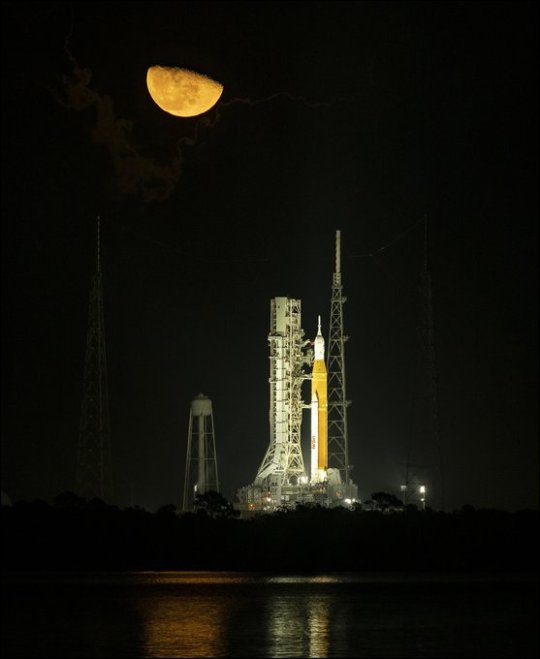#moon rocket
Text
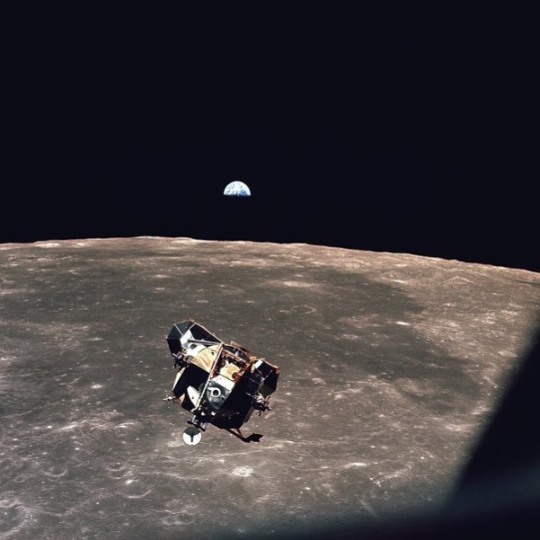
Apollo 11 LEM Descent.
Fun fact: NASA astronaut Michael Collins, who took this image, is the only human in the universe, alive or dead, not shown in this photograph.
#go for queue deploy#nasa#nasa apollo#apollo 11#apollo#apollo program#moon landing#space#spaceflight#space exploration#moon#moon rocket#space program#outer space#astronaut#astronauts#earth#earthrise#earthset#lunar#science#technology#engineering#stem#exploration#alone#lonely
169 notes
·
View notes
Text

Rocket 🚀 - logo design concepts ☆☆☆
Left or Right? Write your favourite 💬👇🧡
#rocket#rocket power#rocket science#moon rocket#education#consulting services#logo design#illustration#artists on tumblr#graphic design#bookblr#canada
32 notes
·
View notes
Text
Artemis 1 thunders to orbit following a flawless liftoff of NASA's first Space Launch System rocket
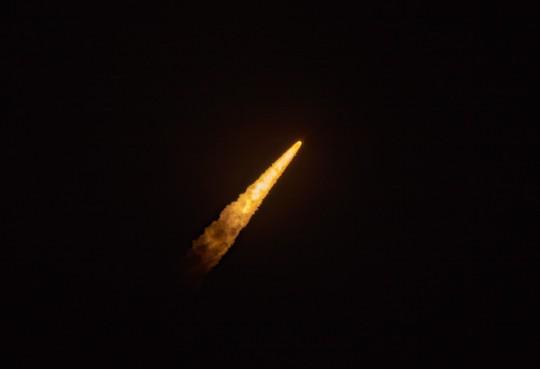

#nasa#space launch system#artemis#artemis 1#orion#sls#rocket#space#spaceflight#moon#luna#launch#rocket launch#moon rocket
24 notes
·
View notes
Text
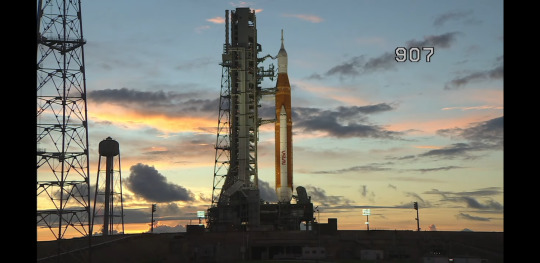


Live feed screenshots of SLS Artemis I on LC-39B this morning.
#SLS#Artemis I#SLS Artemis I#rocket#nasa#August#2022#LC-39B#cape canaveral#Florida#moon rocket#my post
19 notes
·
View notes
Photo
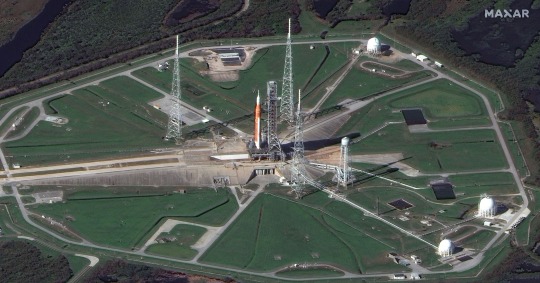
6 notes
·
View notes
Text
Pills 💊 of all class available at all time
#canabbis#good kush#happy pills#xanax plug#moon rocket#super silver#buy injectable steroids#anadrol#anavar#mushrooms#the patients painkiller is the psychologist#pain killerz
3 notes
·
View notes
Text

just testing stuff :))
2 notes
·
View notes
Link
#orion#artemis#nasa#nasa moon mission#we are goin#space and astronomy#moon rocket#outer space#spaceship#moon
3 notes
·
View notes
Text
James Webb is Just the Tip of the Iceberg in Space Exploration

The successful launch of the James Webb telescope in December reinvigorated excitement over the seemingly endless opportunities to expand our understanding of the universe. According to scientists, the next great endeavor is building a base on the moon.
That goal is part of the mission behind the Artemis 1 moon rocket, whose launch was again delayed due to Hurricane Ida now battering Florida’s coast.
“The mission is to make sure that traveling to the moon for humans for many days is safe,” said Alexandra de Castro, science and technology communicator at PASQAL, which designs quantum computing programs.
When it does launch Artemis 1 will carry human-size dummies fixed with detectors to determine the amount of radiation humans might be exposed to over longer periods of time on the moon. According to de Castro, Artemis Two’s launch — scheduled for May 2024 — will take four astronauts including possibly the first female astronaut to walk on the moon.
Castro spoke during a briefing organized by Ethnic Media Services looking at what lies ahead in space exploration.
“China and Russia are also collaborating on a lunar base,” noted de Castro, hinting at the potential for a new space race like the one that defined much of the Cold War following the Soviet Union’s launch of the Sputnik rocket in 1957.
In more recent years Russia had been collaborating with NASA on the International Space Station and was working with both NASA and the European Space Agency on the Gateway project, which aims to establish an orbital station around the moon. Food and other supplies were to be transported to the station using Russian-made modules that would ferry back and forth from Earth.
But Russia severed all cooperation immediately following its invasion of Ukraine, and has since turned to its ally in Beijing, de Castro stressed.
The last manned mission to the moon was Apollo 17 in 1972. The journey back then took 12 days and was fraught with potential danger given how little scientists understood about the risks of space travel.
“We now have a lot of information from the 20 years of experience with the International Space Station,” de Castro said, adding this next phase in humanity’s reach for the stars holds tremendous possibility in fields that extend well beyond space: from health care to communications, transportation, and climate change.
And then there is the question of extraterrestrial life.
Marcio Melendez is with the Space Telescope Science Institute (STSci) in Baltimore, Maryland and was part of the team that worked on Webb’s mirrors. “Three years ago, we only knew of one exoplanet,” planets orbiting stars outside our own solar system. “Now we have 5,000 exoplanets and many of them are earth-like.”
American astronomer Edwin Hubble’s discovery of the Andromeda Galaxy in 1924 dramatically reshaped our understanding of the universe, proving its expanse far beyond our own Milky Way. NASA has since placed over 90 telescopes into orbit hoping to further deepen our view of the cosmos.
That effort has led to the discovery of billions of stars and galaxies and has brought humanity closer than at any other point in history to answer some of our most perplexing and profound questions: where do we come from, how was the universe formed, and is there life outside our solar system?
“We need to think big and there is nothing bigger than the James Webb,” said Melendez. “Think about a telescope that is so sensitive that you can see the heat signature of a bumblebee on the moon.”
That sensitivity is due in part to Webb’s infrared optical technology, which must remain at an otherworldly temperature of below 7 kelvin, or roughly negative 500° Fahrenheit. Maintaining such frigid conditions — even in the vacuum of deep space — requires a massive, origami like sun visor that shields the telescope from the warming rays of the sun.
“Virtually every single image that we take with James Webb is a deep field,” meaning an image that peers into the blackness of space, explained Melendez. Each image, he adds, contains “hundreds of galaxies in the background,” making Webb something akin to a “time machine,” able to see light that has traveled billions of years stretching to the origins of the universe.
The telescope is also able to detect how planets and stars form and how galaxies interact.
“Webb is able to characterize the abundance of different molecules in the atmospheres of exoplanets,” which can help determine the presence of life, said STSci’s Nicole Arulanantham. “Now whether that life is intelligent, we don’t know.”
Arulanantham’s main area of research is the formation of stars and planets. With the Hubble Space Telescope, she and her team have been looking at how young stars use ultraviolet light in the process of planet formation. “This tells us how quickly the stars are growing,” she said.
With Webb, she and her team will now be able to determine the role that water plays in that process, explaining that molecules like hydrogen cyanide, an important carrier of hydrogen, carbon, and nitrogen, essential to forming life on earth, can be seen with the telescope.
For de Castro, one of the greatest achievements in space exploration is right here on earth. The Artemis Accords are a series of bi-lateral agreements between nations participating in the Artemis program, bringing together scientists from around the globe as part of an effort to return humans to the moon.
“This is how science is done today,” she said. “It teaches us how to deal with one another.”
Originally published here
Want to read this piece in Spanish? Click here
#English#space exploration#moon landing#Artemis Accords#Hubble Telescope#james webb telescope#intelligent life#NASA#Moon Rocket#China#Russia#Andromeda Galaxy
2 notes
·
View notes
Text

#inktober52artemis#inktober52#artemis rocket#moon rocket#ice rocket#artemis fuel leak#fueltank#cartoon#drawing
2 notes
·
View notes
Text

NASA’s Space Launch System rocket standing atop LC-39B while a SpaceX Falcon 9 rocket prepared for launch of Crew 4 at LC-39A.
(©)
#go for queue deploy#nasa#nasa sls#nasa orion#nasa artemis#spacex#falcon 9#dragon#crew dragon#commercial crew#rocket#rocketry#moon rocket#space launch system#artemis#artemis program#artemis 1#space#spaceflight#space exploration#space program#spacecraft#science#technology#engineering#stem
20 notes
·
View notes
Text

NASA logo concept ☆☆☆
Write your thoughts 💬👇
#nasa#nasa moon mission#nasa photos#logo#design#business#branding#artists on tumblr#startup#creative#identity#graphic design#usa#washington#chicago#moon rocket#stars#constelation#moon
89 notes
·
View notes
Text
নাসার মুন রকেটের দ্বিতীয় উৎক্ষেপণের উদ্যোগ বাতিল
নাসার মুন রকেটের দ্বিতীয় উৎক্ষেপণের উদ্যোগ বাতিল
নাসার নতুন আর্টেমিস আই মুন রকেটের উৎক্ষেপণ স্থগিত হওয়ার পর সম্ভাব্য দীর্ঘ বিলম্বের সম্মুখীন হচ্ছে। এটি হলো, নাসার মুন রকেটের দ্বিতীয় উৎক্ষেপণের উদ্যোগ বাতিল।
স্পেস লঞ্চ সিস্টেম (SLS) যানটি উঠানোর জন্য কন্ট্রোলাররা শনিবার আবার চেষ্টা করে ব্যর্থ হয়েছেন। কিন্তু জ্বালানি লিক বন্ধ করতে পারেনি।
প্রকৌশলীদের এখন রকেটটি পরিদর্শন করতে হবে। যেকোন সম্ভাব্য মেরামত লঞ্চ প্যাডের পরিবর্তে ওয়ার্কশপে…
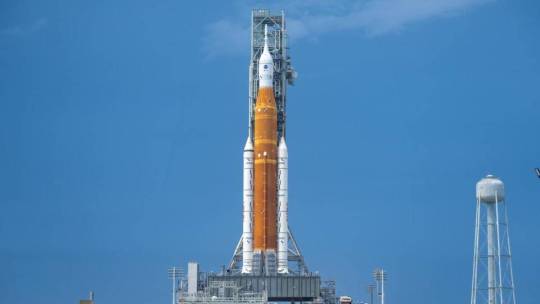
View On WordPress
#artemis#artemis 1#artemis 1 launch#artemis 1 mission#artemis 1 rocket launch#artemis 1 rocket launch florida#artemis 1 rocket launch scrubbed#artemis launch#artemis launch 2022#moon rocket#nasa artemis 1 rocket launch#nasa artemis 1 rocket launch scrubbed#nasa artemis launch#nasa moon mission#nasa moon rocket artemis 1 launch#nasa moon rocket launch#nasa moon rocket launch date#nasa rocket launch#rocket launch#space launch system
2 notes
·
View notes
Text

Moonbound: One Year Since Artemis I
On this day last year, the Artemis I rocket and spacecraft lit up the sky and embarked on the revolutionary mission to the Moon and back. The first integrated flight test of the rocket and spacecraft continued for 25.5 days, validating NASA’s deep exploration systems and setting the stage for humanity’s return to the lunar surface.

On Nov. 16, 2022, the Space Launch System (SLS) rocket met or exceeded all expectations during its debut launch on Artemis I. The twin solid rocket booster motors responsible for producing more than 7 million pounds of thrust at liftoff reached their performance target, helping SLS and the Orion spacecraft reach a speed of about 4,000 mph in just over two minutes before the boosters separated.

Quite a few payloads caught a ride aboard the Orion spacecraft on the Artemis I mission: In addition to a number of small scientific satellites called CubeSats, a manikin named Commander Moonikin Campos sat in the commander’s seat. A Snoopy doll served as a zero-gravity indicator — something that floats inside the spacecraft to demonstrate microgravity.
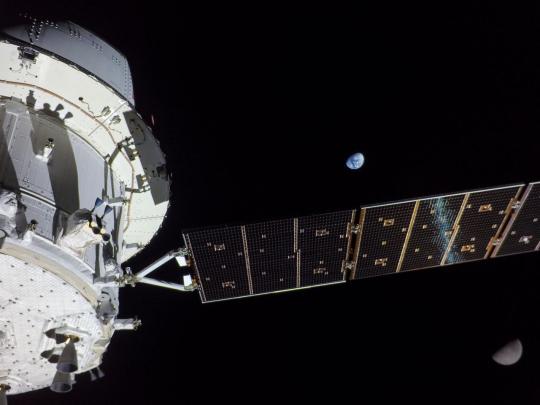
During the mission, Orion performed two lunar flybys, coming within 80 miles of the lunar surface. At its farthest distance during the mission, Orion traveled nearly 270,000 miles from our home planet, more than 1,000 times farther than where the International Space Station orbits Earth. This surpassed the record for distance traveled by a spacecraft designed to carry humans, previously set during Apollo 13.
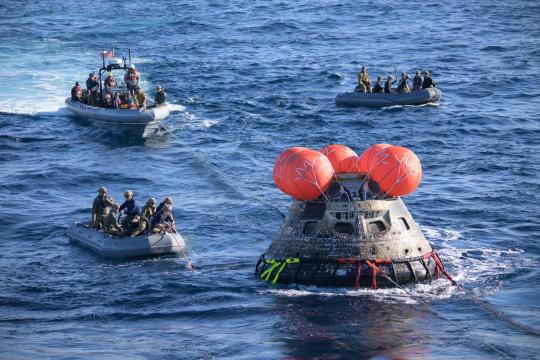
The Orion spacecraft arrived back home to planet Earth on Dec. 11, 2022. During re-entry, Orion endured temperatures about half as hot as the surface of the Sun at about 5,000 degrees Fahrenheit. Within about 20 minutes, Orion slowed from nearly 25,000 mph to about 20 mph for its parachute-assisted splashdown.
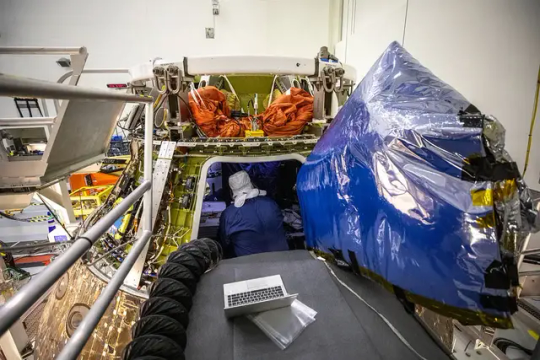
Recovery teams successfully retrieved the spacecraft and delivered it back to NASA’s Kennedy Space Center for de-servicing operations, which included removing the payloads (like Snoopy and Commander Moonikin Campos) and analyzing the heat shield.
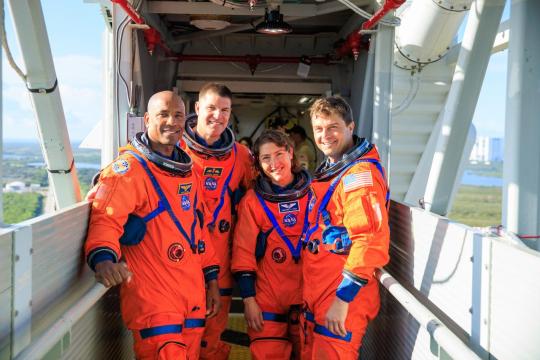
With the Artemis I mission under our belt, we look ahead to Artemis II — our first crewed mission to the Moon in over 50 years. Four astronauts will fly around the Moon inside Orion, practicing piloting the spacecraft and validating the spacecraft’s life support systems. The Artemis II crew includes: NASA astronauts Reid Wiseman, Victor Glover, and Christina Koch, and CSA astronaut Jeremy Hansen.
youtube
As we look ahead to Artemis II, we build upon the incredible success of the Artemis I mission and recognize the hard work and achievements of the entire Artemis team. Go Artemis!
Make sure to follow us on Tumblr for your regular dose of space!
#Artemis#Rocket#Anniversary#Launch#NASA#Space#Moon#Lunar#Astronaut#Apollo#Orion#Spacecraft#Space Launch System#STEM#science#tech#technology#on this day#Youtube
2K notes
·
View notes
